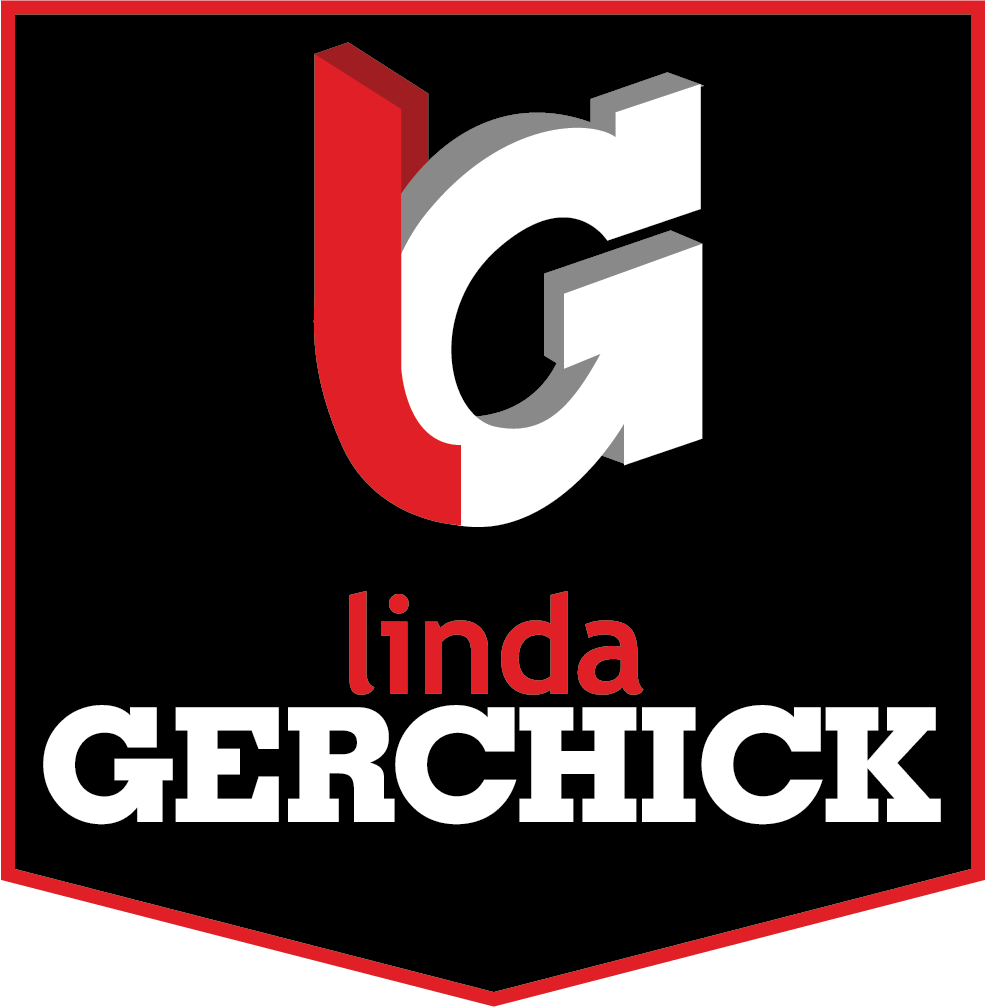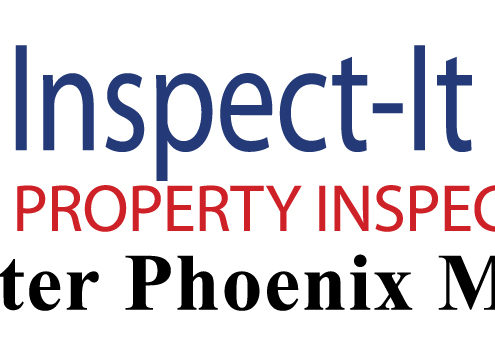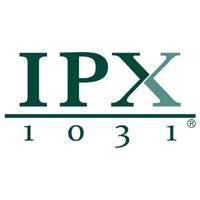Tag Archive for: 1031 Tax Deferred Exchange
Danger Lurking in Biden Plan to Eliminate or Cap 1031s
 Linda Gerchick and Daniel Wagner
Linda Gerchick and Daniel Wagner
The strength and resilience of the commercial real estate market has been tested many times over the last 100 years – never more so than during these past 16 months as the COVID-19 pandemic shuttered countless retail centers, restaurants, hotels and office buildings. The fallout continues. It is estimated that up to 25% of the strip shopping centers will go bankrupt. Virtual meetings will permanently replace significant business travel, and many people will work from home exclusively.
As every state in the nation, Arizona especially, begins to creep towards an economic rebound, commercial real estate must again play an essential role in that recovery. The Biden plan to eliminate the ability to defer taxes on property gains over $500,000 from like-kind exchanges of real estate, which is granted under Section 1031 of the Internal Revenue Code, will cripple commercial redevelopment at a time when our communities need that investment more than ever.
Section 1031 provides important capital to revitalize communities throughout the Phoenix area and grow our economy. It has been used to provide affordable multifamily housing in working class communities, revitalize commercial shopping centers and allow growing businesses to expand their space.
The Federation of Accommodators, the national organization of 1031 Exchange companies, analyzed and aggregated the data for the State of Arizona from seven companies in Arizona from 2015 to 2019 and found there were 14,000 properties involved in exchanges with a total value of $23.4 billion.
This is just a portion of the Arizona market as there are many more companies that facilitate exchanges, but it is clear that Section 1031 is important to the real estate economy and that it generates significant tax revenue for state and local governments.
An all-too-common misconception, and one which has often fueled attempts to remove the provision, is that 1031 exchanges are a loophole to avoid the payment of taxes. That is not the case. A microeconomic study on 1.6 million properties conducted by professors David C. Ling (Univ. of Fla.) and Milena Petrova (Syracuse Univ.) concluded that 80% of replacement properties acquired in a 1031 exchange were ultimately disposed of through a taxable sale, rather than a subsequent exchange, with all of the deferred taxes getting paid within roughly a 15-year window.
Additionally, a macroeconomic study initiated by Ernst & Young in 2017, and recently updated, concluded that if section 1031 were limited or repealed, it would shrink GDP by a whopping $9.3 billion per year. It further examined the potential benefits from the use of 1031 exchanges for the coming year and concluded that transactions from section 1031 exchanges will create an estimated 568,000 new jobs (260,000 in businesses using 1031, and another 308,000 from suppliers to those businesses), generating $27.5 billion in labor income which in turn will generate $55 billion value added to the GDP, and $14 billion paid in federal, state and local taxes. That $14 billion generated in one year far exceeds the estimate in the 2021 Biden budget that says capping 1031 at $500,000 raises on average of $1.95 billion per year over 10 years. Why would anyone change Section 1031? It doesn’t raise any money.
Clearly the benefits gained by the national – as well as local – economies from 1031 exchanges far exceed the assumed cost to the Treasury from these temporary tax deferrals – with ‘deferral’ being the operative word.
In the end, the Treasury receives its money; state and local entities enjoy the annual increased taxes generated by the healthy redevelopment of commercial property; and the local and regional economy is strengthened through the creation and retention of jobs.
Eliminating or capping 1031 exchanges – which serve as an essential generator of economic redevelopment, jobs, and local tax revenue for Phoenix and other cities and counties across Arizona – would fall far short as an expected source to pay for the American Families Plan, and ultimately have the unintended consequence of harming, not helping, our towns, our cities, and our American families who have struggled mightily from the ravages of the pandemic.
–30–
Linda Gerchick, CCIM a specialist in income producing properties, owns Gerchick Real Estate in Scottsdale. She is a repeat recipient of the Phoenix Board of Realtor’s Presidential Award.
Daniel Wagner is Senior Vice President of Government Relations for The Inland Real Estate Group of Companies. He is past president of the Chicago Association of REALTORS®.
|
I want t post an article from my referral partner Rick Wittstock of IPX 1031. Rick has been a valued REferral Partner of mu firm. Since so many Investors are looking towards 1031 Tax Deferred Exchagnes this article cam out at the right time. Please go to our Referral Partner Page to contact or learn more about Rick!
|
|
|
|
There are SO MANY so called Real Estate Gurus out in the market place and I really hate to see anyone give them their money! For all of the 20 years that I have selling Investment Real Estate; sometimes it baffles me how these people can take the money from investors-many of whom have little experience.
I have given seminars for Investors since 2003 and I do not want a dime upfront. If I do my job correctly-including educate the Investor; there is not any reason that I do not get compensated for my efforts on a performance basis. Meaning COMMISSION!
Here is what every Investor in Real Estate needs to know-simple steps.
- Pick a Power Team-which means a Broker (preferably a CCIM) that understands the market that you want to invest in.
- With the Power Team- Make sure that the Broker is strong and well connected to the sources that you need(Lawyers, Lenders, Inspectors and other Brokers as well)
- Decide on your PATH. This can mean several things such as what type of asset class do you want. Why do you want to invest? How long do you want to hold the investment? Make sure that your Broker not only understands this but also has the well rounded ability to explore all possibilities with you. Often times when someone visits with me, by the time we are finished with the conversation we are exploring a different path.
- Make sure that you get “papered up”. This means your entity that you are going to use to buy the Asset with. Don’t wait until you go to contract. Contracts can be overwhelming and why not get some of the details completed before you go to contract. You will be busy enough with the Due Diligence that you will not need to be distracted by the paperwork of the Entity,obtaining your EIN number, and establishing the correct bank accounts.
- Speak with either your CPA or your Power Team’s recommended CPA. While your CPA may be great; get the advise of a good Real Estate CPA. Like all professions-some CPAs are better at different things.
- GET QUALIFIED-in today’s world, if you are not qualified the contract is not worth the paper that it is written on!
- Be prepared to write a contract. This does not mean the closing price-it means get the deal and figure it out! Rely on your Broker to advise the offering price. Many markets need a full price offer to obtain the accepted contract.
- ASK QUESTIONS! If I do not hear a question after explaining something; I can only believe that I was understood. The only “stupid” question is the question that is not asked!
I could go on and on and often I do but here is the BEST advise I can give-no matter what market or even country that you invest in:
Give a Tenant a CLEAN place to live
Give a Tenant a SAFE place to live
Give a Tenant responsive property management
Do this and you will not experience vacancies, you should be full and I can speak from experience that you will get above market rents!
Check out our listings Gerchick Real Estate Listings
8 Predictions about the Future of Assisted Living-Finally for the Investor we have a management Team in place so that the Passive Investor can own this Asset Class of Property
The U.S. economy — and the healthcare industry — have seen more than their fair share of ups and downs over the past decade. The Great Recession has only been the most recent upheaval to affect the way Americans plan for their retirements and their aging parents’ senior care. Along with all the economic shifts, there have been big changes in medicine, technology and how we view healthy aging.
It’s no surprise that senior and assisted living options are also changing in response to socioeconomic conditions. Both consumers and providers have had to tighten their budgets and get creative, looking outside the box for senior housing possibilities.
The rising cost of assisted living means that some families are looking at aging in place, home care and multi-generational housing instead of more expensive care options. Those who do opt for assisted living will find a wide range of offerings in new, booming areas like eco-friendly housing and so-called “smart homes,” as well as expanded amenities at more traditional assisted living communities.
What overall trends can we expect to see in housing for senior Americans? Check out our eight predictions for the near future of senior care:
1. The Decline of the Nursing Home Model of Care
We’ve been seeing it for some time — a move away from the concept of senior housing as synonymous with nursing homes, and a move toward other senior housing options, whether it’s independent living, home care or memory care. It’s not a trend that’s likely to change anytime soon. According to Senior Housing News, factors such as the high cost of skilled nursing and recent cuts to Medicare and Medicaid programs will only accelerate the shift.
Dwayne Clark, CEO and Founder of Aegis Living, comments that he wants his residents to “experience vacation at their disposal.” In fact, resident enjoyment is so important to Clark that he’s helping to reinvent memory care. “We are building a community between Madison Park and Capitol Hill… We went back to the Madison Park of the 1950’s and are creating the look and feel, for our memory care residents, based on that time as seniors with dementia resort to long-term memories.”
2. The Rise of Technology-Enhanced Senior Care
Personal care robots are just one attention-grabbing example of the types of up-and-coming technology that are going to revolutionize senior care as we know it. There are plenty of options already at our fingertips that promise to improve the health and quality of life for seniors — from smart home computer systems that keep track of medications and vital signs to wireless networks that provide mobile support for seniors in care communities.
3. More Multigenerational Housing Options
Active seniors who don’t want to move into a community — or can’t afford it — are looking at other options for an independent lifestyle. One possibility is multigenerational housing — the idea that a family will pool their resources and either modify their existing home to suit multiple generations, or move into a place that’s built to house both young families and older adults.
Neighborhood-Friendly Senior Living. Neighborhood-Friendly Civic Planning
With the economy still recovering, many active retirees want to continue working and living close to a city center or commercial district. There are also many limited-mobility seniors who still want access the amenities of a thriving downtown. These are both good reasons why community planners want to be senior-friendly in the future, whether it’s creating senior housing in existing downtown hubs or considering the needs of older adults in planning new neighborhoods.
5. Cooperative Living: Senior Co-Housing
Senior co-housing is another way active older adults can gain the benefits of community living, but on a smaller scale. Co-housing is more like living on a commune, where residents have independent homes but also benefit from shared spaces like gardens and recreation facilities. There are generally some shared meals and housekeeping duties, paid for through monthly dues, and residents have a say in community decisions. This trend has been growing over the past decade.
6. More Amenities and Lifestyle Perks in Traditional Senior Housing
With inevitable rising costs for senior living options like assisted living and continuing care retirement communities, these more traditional forms of housing have begun offering a wide range of amenities to tempt potential residents, from lifestyle-based and cultural communities that cater to LGBT seniors or Asian-Americans to an increased array of recreational options like cultural events, fitness classes and educational opportunities.
Eco-Friendly Senior Living Community7. Going Green: Eco-Friendly Senior Living
These days, eco-friendly increasingly means economical, too, and green senior housing offers older adults the ability to be environmentally minded as they enter their golden years. While there may be an initial investment in building up a green infrastructure —homes and facilities that are LEED-certified, for instance — eco-friendly building, lighting and appliances can save money in the long run and are much better for the environment.
8. Aging in Place Means a Booming Home Health Care Industry
More and more seniors want to remain at home for as long as possible, as evidenced by some of the trends discussed above. But it’s not just improvements in technology and civic planning that are going to facilitate aging in place. The burgeoning home health care industry is also a necessary adjunct to seniors remaining in the home. The Bureau of Labor Statistics predicts job growth of 70% for home health and personal care aides over the coming decade, noting that home care can be a less expensive alternative for those who don’t need comprehensive assistance.
One of the issues that I see when an agent closes with a Client-whether it is a Residential Sale or a Commercial Transaction is that they do not maintain a relationship with that person.
It is easy to “promise” to do lunch or drinks or Barbecues. However, we are all busy and this is usually not feasible.
I want to speak about the Commercial Transactions.
It is important to keep abreast of the markets and where the asset sits in the flow of the market. I recommend that everyone have at least a 6 month look at what is going on. I work at preforming 6 month check ups with all of my commercial closings. However, in order to do this I need a fresh set of books and records along with any capital improvements.
We keep an email; drip campaign going with Market updates. BUT—————- I am available for conference or meetings from everyone of my Clients. Many times I have someone call me and say, “You probably don’t remember me but…” Most of the time not only do I remember them but I can describe their properties.
My Clients are often surprised when I call them and update them on their market. It is a good time to evaluate the properties position in the market. So no matter large or small-Clients STAY on my radar.
Key Points of Corporate Tax Reform
- Corporate tax reform looks to be a top priority for Congress and the Trump administration
- Supporters are promoting strategies designed to boost the economy
- Changes implemented could have an impact on the markets and investors
Discussions about corporate tax policy are usually just the ticket for those wanting to be left alone at dinner parties. As investors though, we should be aware of how potential changes in corporate tax policy can impact the value of companies of which we are shareholders. In some cases, changes in corporate taxes can have as much impact on our financial well-being as changes in personal tax rates.
Changes affecting imports and exports
There are a number of proposals reportedly being evaluated, but one in particular could have notable implications for the economy, corporate earnings, currency values, and even international trade.
This proposal is sometimes called a “border tax”, but legislators more accurately refer to it by its full title of “destination-based cash flow taxation.” The title may not exactly roll off the tongue, but it denotes the basic idea of eliminating taxes on exports while disallowing the cost of imports as a deductible item for tax purposes. The goal is to incentivize shipping more goods abroad while reducing imports, presumably to encourage more domestic production.
It remains to be seen how far this proposal goes, but in its purest form, it could have significant investor implications. Based on present activity, this proposal could also generate higher tax revenue for the federal government given that the U.S. currently imports more than it exports.
Improving U.S. competitiveness by lowering taxes
The U.S. currently has the highest corporate tax rate in the developed world at 35%, according the Organization of Economic Cooperation and Development (OECD). Allowable deductions and credits lower the actual or “effective” tax rate most companies pay, but the complexity of the U.S. tax code often inadvertently entices businesses to locate operations in more favorable tax jurisdictions outside the U.S.

Benefits of repealing the “repatriation tax”
Any meaningful reform of the corporate tax code is also likely to lower or eliminate the tax on income generated outside the U.S. Currently, businesses face the full corporate tax rate (as high as 35%) on foreign income — but only when the profits are brought home to the U.S. (i.e. “repatriated”). This policy is very unusual and has the unintended consequence of encouraging companies to keep their foreign generated profits outside the U.S. As a result, it can be more appealing for large, multi-national firms to expand production overseas.
It is estimated that domestically based companies held approximately $2.5 trillion outside the U.S. as of the third quarter of 2016 according to Capital Economics, an economic research firm. It’s impossible to say how much of this money would be brought back to the U.S. if rates were cut or eliminated, but reinvesting that cash domestically could have notable economic benefits. Companies could invest in new operations, hire more workers, pay higher dividends, reduce debt, or repurchase shares.
Nothing firm yet, but an issue to watch
Specific proposals for corporate tax reform are still taking shape. The potential of these policies to have material economic or financial market implications, however, makes it an issue worth careful watching. Investors should note that changes to corporate tax laws could have a meaningful impact on their portfolios.
So in this article, I want to share 5 important reasons for real estate investors to invest in multifamily real estate as part of their overall investing plan.
#1 Easier to Finance
Although multifamily investment properties are more expensive than single-family properties, they’re generally easier to finance, all things considered.
While this may sound counterintuitive, investors need to understand that multifamily properties pose less risk for a lender, because multiple families are living under one roof.
Vacancy relating to multifamily and single-family property is just one example of how multifamily properties are less risky for lenders. A vacancy with a multifamily property has less of a negative impact than with a single-family property, because it continues to generate cash flow from rents collected from the remaining families.
#2 Quickly Grow Your Portfolio
Investors can grow their rental property portfolio more quickly with multifamily investment properties than single-family homes.
For example, the time, energy, and expense of purchasing 300 single-family properties with 300 closings can be drastically reduced by purchasing one multifamily property with 300 units. An aggressive investor can grow his portfolio quickly with a few multifamily purchases, rather than taking years to purchase individual properties.
#3 Easier Property Management
Some real estate investors with single-family homes try to self-manage their properties in order to save money, especially when they only own a few properties. Of course, this usually does not bode well for the investor or tenants, and causes major stress for both parties.
Multifamily investment properties can be easier to manage because they produce the cash flow and income to reasonably afford the staff to manage the property.
Additionally, multifamily properties can be less expensive to manage because:
- Professional management staff work full time, and possibly live, on the premises.
- Units in a multifamily property are centrally located, and not spread out over a large geographic area.
#4 More Options for Forced Appreciation
Forced appreciation occurs when an investment property increases in value as a result of actions taken by the owner.
Multifamily properties inherently have more options for owner-driven appreciation, because a small change adds value affecting multiple families, not just a single family. Also, larger multifamily properties have large common areas and community amenities that can be enhanced to add value and force appreciation.
Finally, when breaking down the numbers on a per family basis, the cost per family for the improvements of a multifamily property are often considerably less compared to a single-family home.
Common improvements to multifamily investment properties that force appreciation include:
- Improving curb appeal.
- Updating common areas and individual units.
- Adding and improving amenities.
- Adding security features, such as a gate, security guards, etc.
#5 More Cash Flow
Multifamily investment properties have a greater opportunity to generate cash flow than single-family properties, because of the reasons we’ve discussed.
Higher profits are generated by lower expenses resulting from having multiple units under one roof, when compared to single-family homes spread great distances apart. Also, multifamily properties have centralized and consistent management teams that can generate profits by lowering expenses.
Cash flow is also generated with multifamily properties by consistently forcing appreciation, which results in higher rents, higher profits, and a stronger balance sheet.














